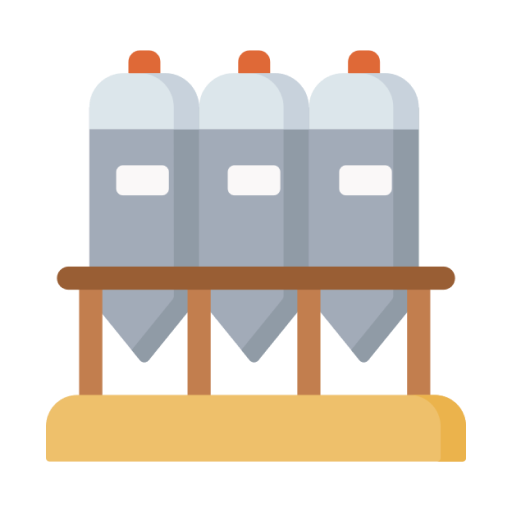Transforming support to enable everyone to do their best work.
Employees need fast and reliable support to stay productive.
From hardware upgrades, building access, or even ants in the break room - employees need to connect to support staff to get things done.
However, Blizzard’s support request tool was notoriously difficult to use. Frustrated employees were misusing the system and resorting to offline workarounds. This created inefficiencies for support teams and led to long wait times and dissatisfaction.
How could we enable employees to get the support they need?
My Role
I created and executed on a design roadmap to streamline the support experience for Activision Blizzard’s thousands of global employees. I partnered with designers, product managers, engineers, and specialized support teams to deliver a scalable, intuitive, employee-centric support experience built on the ServiceNow platform.
What I Did
UX Strategy & Vision
User Research, Testing, & Analysis
IA, Interaction Design, & Content Strategy
Championed design success metrics
Managed sprint tasks for myself and 2 junior designers
Coached junior designers through creation of brand and design system
Finding the root of the problem
User interviews, surveys, and journey analysis informed who we were designing for and what pitfalls existed in the support request experience.
User Journey Pitfalls
Browsing options
Submitting form
Tracking progress
Aligning on our path
After initial discovery, I conducted a workshop with stakeholders from multiple disciplines to review our data as a group and align on outcomes. This helped us navigate assumptions and concerns to drive decisions.
I facilitated several design activities including Crazy 8s to generate possibilities and dot voting to prioritize our efforts.
The key outcome was alignment on our constraints, design principles, and where redesign would give the best value for effort.
Embracing Constraints
Identifying constraints early ensured that my solutions were feasible, with no surprises or wasted effort.
Forms required
Platform and support requirements require employees to fill out a form.
No changes to search
Although search was a known problem, the effort was out of scope.
We don’t own content
All content for forms are articles is owned by the support teams, not the product team.
Limit changes to interaction patterns
Every customization to existing platform patterns added extra effort.
Sticking to our principles
Defining a set of principles made it easier for our cross-functional team to stay true to the collective vision.
Eliminate support silos
Siloed support options create friction and inconsistencies in the catalog.
Leverage platform strengths
Utilize platform features to personalize and automate.
Be conversational
Conversational UI copy bridges the gap between employees and support.
Give users confidence
Provide guidance and actionable information at the right time.
Decrease barriers
Ask the minimum number of questions required to provide support.
Be transparent
Set clear expectations and show what is happening, when, and by whom.
Where can we make the most impact?
We chose three areas of improvement we felt would increase satisfaction and decrease improperly submitted requests.
Intuitive Wayfinding
Get employees to what they need quickly through a more organized catalog, navigation, and landing page experience.
Form Efficiency
Enable employees to submit requests quickly, accurately, and confidently through simple and consistent forms.
Clear Status
Keep employees informed on request status through clear, detailed, and actionable ticket status information.
Deep Dive: Intuitive Wayfinding
The largest chunk of effort for this project was improving the overall wayfinding experience.
The effort spanned several months and required coordination across 3 business units, dozens of support teams, and employees in multiple countries.
A solid foundation
The tool was organized around support team silos, and not in a way that made sense to employees. My first step was to create a solid information architecture to improve navigation for users, and give support teams a content structure that met current and future needs.
Learning from the users
Card sorting and tree tests helped me craft a new information architecture & navigation scheme based on the employees’ mental model of support.
The old IA was based on a confusing Request vs Incident approach, with support options managed in inflexible silos.
I came up with a new IA that eliminated the need for employees to distinguish support types, better matched their expectations, and provided flexibility to support teams.
Designing for multiple user types
Power Helpers
Frequently and repeatedly create support tickets for self and others.
The tool is a large part of their daily job.
Soloists
Somewhat familiar with tool, submits requests a 1-2 times a month.
Would be happy if they never had to use the tool.
New Players
No familiarity, must submit many support requests to get set up for work.
Tool is their first impression of company apps.
Wayfinding that Works
Reimagined site navigation and landing page ensures that all persona types can understand what is offered and easily get to support options.
By showing support options as a view of the employee’s workstation, we leverage the strengths of the platform to delight and eliminate guesswork for the most commonly requested items.
User still need to be able to browse all options. By reorganizing and renaming over 500 support options, each support category was transformed into a short, simple lists of understandable choices.
A comprehensive solution, in parts
We delivered the streamlined experience in strategic milestones, culminating in a fully rebranded launch of major changes that streamlined everything from navigation to form submission to tracking ticket status.
Making an Impact
The streamlined experience increased user satisfaction from 53% to 97%.
“I absolutely am in love with the updated support desk.”
“I finally can see what the hell is happening with my ticket. This is so clear, I know who to contact if I have questions.
“This navigation makes way more sense. I don’t have to guess anymore.”
Improved wayfinding and form design led to significantly fewer user mistakes.
Incorrect form submissions decreased from 11% to 3%, while uncategorized requests decreased from 20% to 12%.
When employees submit the correct forms and fill them out accurately, support teams can work more efficiently.
Average ticket resolution time was cut in half, plummeting from 6 to 3 days.
The future of SupportDesk
By decreasing the amount of misuse of the system, support teams now have more accurate data that has helped them better respond to emerging needs. The improved processes, design system, and content guidelines enable support and development teams to execute quickly and consistently while keeping the content intuitive and high quality.
Im excited for the next innovations in the pipeline that could leverage the platform, new technologies, and the team’s talent to continue creating a support experience that lives up to Blizzard’s high expectations.

































